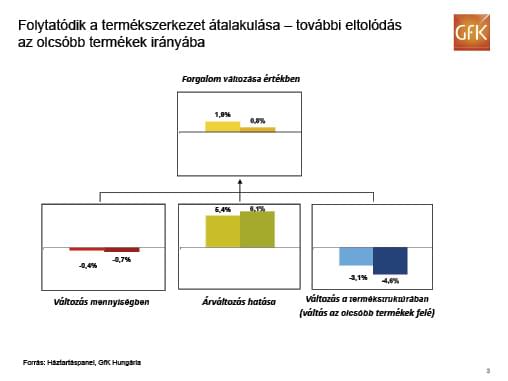Magazine: FMCG retail closed a difficult year
In 2012 households hardly spent 1 percent more on FMCG products in terms of value than in the previous year. Only few categories were able to produce real growth in the last few years: sales of most product groups only increased in value but decreased in volume. This is true for basic food products, beverages, dairy products, personal care products, household chemicals and convenience products. What is more, the level of inflation was way above the value of households’ purchases.
This situation forced Hungarian households to become conscious buyers. 2012 brought yet another paradigm shift, the most important characteristic of which is the narrowing of the buying base. About 60 percent of households cut down on their spending last year and these families also abandoned certain categories. Nearly 40 percent of households were able to increase their FMCG spending with the level of inflation or more, but higher-income households didn’t generate extra sales either. According to forecasts, 2013 will not usher in higher retail sales either and taking into consideration the high level of inflation (expected to be above 4 percent), the realistic scenario for this year is no change in the real value of sales in comparison with 2012, and even the optimistic scenario doesn’t calculate with a bigger increase than 1 percent.
Related news
Related news
The New Year’s Eve fireworks fair is back: temporary sales will start in department store parking lots at the end of December
🎧 Hallgasd a cikket: Lejátszás Szünet Folytatás Leállítás Nyelv: Auto…
Read more >The first Eastern European non-alcoholic beer turns 50
🎧 Hallgasd a cikket: Lejátszás Szünet Folytatás Leállítás Nyelv: Auto…
Read more >Sausage: pork prices are already going down, but they won’t be cheaper in stores – a significant correction may come in the spring at the earliest
🎧 Hallgasd a cikket: Lejátszás Szünet Folytatás Leállítás Nyelv: Auto…
Read more >




